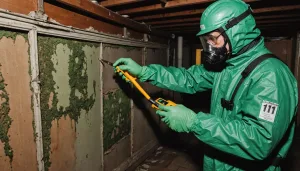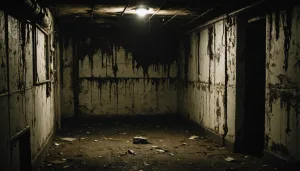Faulty wiring and outlets represent one of the most prevalent causes of electrical fires in homes and businesses alike. Representing a hidden danger, compromised electrical systems often go unnoticed until it’s too late, leading to devastating consequences. Understanding the intricacies of this risk and taking proactive measures can significantly enhance electrical safety and contribute to fire prevention.
The primary issue with faulty wiring and outlets arises from their inherent ability to generate sparks or overheat, especially when demand exceeds the capacity of the existing system. Worn out or poorly installed wiring can easily become a fire hazard. Aging systems, in particular, may not meet the demands of modern electrical appliances and usage levels, putting extra stress on the electrical infrastructure.
Several signs can help identify potentially dangerous wiring and outlets, such as flickering lights, a burning smell near outlets, scorch marks, and warm or vibrating wall plates. Recognizing these warning signals and taking immediate action can prevent hazardous situations. Here is a comparison of common indicators and associated risks:
| Indicator | Potential Risk |
| Flickering or dimming lights | Possible loose connections or insufficient wiring |
| Scorch marks or discoloration around outlets | Signs of overheating and potential fire hazard |
| Burning smell or smoke near outlets | Immediate risk of electrical fire |
| Warm or vibrating outlets/switches | Sign of electrical overload or faulty wiring |
Addressing faulty wiring and outlet risks begins with thorough inspection and maintenance by certified professionals. Engaging an electrician to assess and upgrade outdated systems can reduce risk substantially. Moreover, installing advanced safety devices such as arc-fault circuit interrupters (AFCIs) and ground-fault circuit interrupters (GFCIs) can prevent arcing faults and improve overall system reliability.
Beyond professional inspection, individuals should practice basic electrical safety by avoiding the use of outlets and appliances that exhibit signs of damage. Implementing routine checks and being vigilant about any abnormalities helps in early detection and rectification of potential issues. Education on electrical safety within households and workplaces also plays a vital role in mitigating these risks. By remaining informed and proactive, we substantially decrease the likelihood of fires caused by faulty wiring and outlets and better protect our properties and lives.
Overloaded circuits
Overloaded circuits are another significant factor in the occurrence of electrical fires. They occur when electrical demand surpasses the circuit’s capacity, causing excessive heat that can lead to melting wires and ignite fires. Understanding how to manage circuit loads is essential for enhancing electrical safety and fire prevention in both residential and commercial settings.
To tackle the issue of overloaded circuits, it’s crucial to recognize the signs and take proactive steps to address them. Here’s how you can manage and prevent overloaded circuits in a step-by-step manner:
- Recognize the Signs: Stay alert to indicators of overloaded circuits. Common signs include frequent circuit breaker tripping, flickering lights, and buzzing outlets. If any of these symptoms are observed, it’s critical to take immediate action.
- Circuit Assessment: Conduct a thorough assessment of your current electrical setup. This includes identifying which circuits are designated for which rooms or sections of the building. Often, multiple high-demand appliances are inadvertently connected to the same circuit.
- Redistribute Load: To prevent overloads, redistribute the electrical load across different circuits. Ensure that high-power appliances, such as air conditioners and heaters, each have dedicated circuits. If necessary, unplug devices that aren’t in use to reduce the load on a particular circuit.
- Upgrade Electrical System: If your home or business frequently experiences overloaded circuits, it might be time to upgrade the electrical system. This can involve installing additional circuits or upgrading existing wiring to handle higher loads safely. Consulting with a licensed electrician for an evaluation is highly recommended.
- Understand Appliance Ratings: Be aware of the power ratings of the appliances and devices you use. Calculate the total load on each circuit by adding up these ratings, ensuring they don’t exceed the circuit’s capacity. Most circuits in homes are designed to handle between 15 to 20 amps.
- Label Circuit Breaker Panel: Properly label the circuit breaker panel to indicate which areas or devices each breaker controls. This labeling simplifies identifying and managing circuits during instances of overload or maintenance.
- Install Surge Protectors: Use surge protectors where necessary, especially for sensitive electronics, to prevent damage from electrical surges, which often accompany circuit overloads.
- Regular Maintenance: Schedule regular check-ups for your electrical system. Periodic evaluations by a qualified electrician ensure that everything is functioning correctly and safely, minimizing the risk of overloads.
By adhering to these steps, you can greatly enhance electrical safety and mitigate fire hazards associated with overloaded circuits. These measures not only ensure that each circuit operates within its safe capacity, but they also contribute to the broader goal of fire prevention, protecting both lives and property.
Improper use of extension cords
Improper use of extension cords presents a significant risk to electrical safety and can be a common cause of fires if not managed correctly. Many individuals rely on extension cords for convenience, often using them as a permanent solution for inadequate electrical outlets. While extension cords offer flexibility and accessibility, misuse can lead to overheated cords, sparks, and even electrical fires. To mitigate these risks, it’s crucial to understand proper usage and adopt safe practices when employing extension cords in your home or workspace.
Firstly, it is essential to select the right type of extension cord for the job. Using indoor cords for outdoor purposes can lead to dangerous exposure to the elements, increasing risk significantly. Similarly, undersized cords that are not rated for the device’s load can overheat quickly, becoming a fire hazard. It’s recommended to check the amp rating of the extension cord and ensure it matches or exceeds the requirements of the connected devices. This practice fosters fire prevention by ensuring that circuits are not overloaded and that the cords themselves can handle the electricity flow safely.
Avoid daisy-chaining or plugging multiple extension cords together. This practice is not only unsafe but can also lead to excessive resistance and heating within the cords, creating a potential ignition point. When there’s a need to extend beyond the reach of a single cord, it’s advisable to opt for a cord that provides the full length required or, better yet, install additional outlets where necessary.
Handling and maintenance of extension cords are equally important in promoting electrical safety. Routinely inspect the cords for damage such as frays, cuts, or exposed wiring, and retire any cord showing wear. Never run extension cords under carpets, rugs, or furniture where heat can accumulate and ignite nearby flammable materials. This also makes it difficult to visually inspect them for signs of damage.
Proper storage of extension cords can further enhance safety measures. Cords should be stored loosely wound to prevent kinks and ensure their longevity. Stressing the materials by tightly wrapping or compressing cords can lead to wear and breakdown of the insulating layers over time.
Educating household members or office workers about these safe practices is a proactive step toward mitigating fire hazards associated with temporary wiring solutions. Encouraging awareness of the potential risks and reinforcing best practices fosters a culture of safety that can prevent accidents before they occur.
By understanding the implications of improper extension cord use and adopting these preventative measures, we not only minimize the likelihood of encountering dangerous electrical situations but also actively contribute to maintaining a safe environment that protects both people and property.
Old or damaged electrical appliances
When considering the risk posed by old or damaged electrical appliances, it’s crucial to understand how these items can become hidden threats, jeopardizing both your safety and property. Many households may unknowingly harbor appliances that are not only inefficient but also dangerous if they’ve reached the end of their useful life or incurred damage over time. These appliances can ignite fires due to faulty mechanisms, frayed cords, or internal component failures.
One of the most prevalent issues with older appliances is their wiring, which may degrade or become damaged over time. As insulation deteriorates, there is an increased risk of exposed wires, which can spark and ignite nearby combustibles. Regular inspection of cords and connections for visible damage or wear can play a pivotal role in fire prevention. If any signs of wear are observed, such as fraying or exposed copper, repair or replacement should be carried out immediately.
In addition to visible damage, it’s essential to pay attention to appliance performance. Units that overheat, make unusual noises, or emit strange odors should be disconnected and inspected, as these are often indicators of internal malfunctions. Continuing to use appliances that exhibit these symptoms can lead them to catch fire unexpectedly.
Older appliances, particularly those that have not been serviced regularly, may not incorporate the latest safety features. Modern safety standards have dramatically improved the design of electrical devices, often reducing the heat they generate and ensuring automatic shut-off functions to prevent overheating. Thus, upgrading to newer models with these inbuilt safety mechanisms can be a wise investment for enhancing electrical safety in your home.
Additionally, certain appliances require consistent maintenance to remain safe and functional. For example, lint buildup in dryer vents or greasy filters in range hoods can create fire hazards if not cleaned regularly. Developing a maintenance routine, such as descaling coffee makers or clearing vent blockages, helps ensure that all appliances operate as intended and minimize any associated risks.
The use of power strips and outlets also deserves close attention, especially when multiple appliances are plugged into a single socket. Overloading outlets with older, power-hungry devices can lead to increased electrical load and overheating. Ensuring that your electrical setup supports the requirements of your appliances, without surpassing electrical capacity, is fundamental for safe daily operation.
By adopting a proactive approach, such as replacing outdated or faulty appliances, conducting routine maintenance, and being wary of signs of wear, you can greatly increase electrical safety and significantly reduce the risk of a fire in your home. These measures not only protect your property but also contribute to the broader goal of maintaining a safe and secure living environment.
Prevention tips and safety measures
Ensuring electrical safety within your home or business requires implementing a comprehensive suite of preventative strategies and safety measures designed to mitigate the risk of electrical fires. These steps contribute not only to fire prevention but also to the overall security and efficiency of electrical systems in different environments.
Start by scheduling regular inspections with a licensed electrician to assess the condition of your electrical system. This proactive step can identify potential hazards such as faulty wiring, outdated components, or overloaded circuits that may pose a risk if left unaddressed. During these inspections, it’s important to ask about upgrading any element that does not meet current safety standards, including outdated panels and wiring unsuitable for modern electrical demands.
Installing devices such as Arc-Fault Circuit Interrupters (AFCIs) and Ground-Fault Circuit Interrupters (GFCIs) enhances circuit protection and helps prevent fires by detecting dangerous faults. AFCIs are particularly effective at stopping arcing faults, while GFCIs safeguard against electric shocks in areas prone to moisture like kitchens and bathrooms.
Adopt safe practices concerning the use of electrical appliances and equipment. Routinely check the condition of cords and plugs, replacing any that show signs of wear and tear. Ensure that all devices are used according to manufacturer instructions, paying attention to details such as power capacity and recommended usage environments.
Furthermore, it’s vital to avoid overloading power strips and outlets. Consider implementing a strategic distribution of load among available circuits, reducing pressure on individual circuits, and saving appliances from being exposed to the risk of overheating. For heavily-used zones, ensure ample outlets are available to handle their power needs without resorting to hazardous short-term solutions like extension cords for permanent use.
In the event of any electrical anomalies—such as flickering lights or outlets that feel warm to the touch—immediate investigation and rectification are essential. Encouraging awareness among family members or employees about the signs of electrical trouble can vastly improve incident response times and outcomes.
Lastly, fostering a culture of electrical safety means promoting ongoing education about best practices and maintaining vigilance over changing conditions in the home or workplace. Simple habits like regularly cleaning appliances, ensuring vent maintenance, and keeping combustibles away from heat sources can greatly reduce potential incidents.
By adopting these measures, you create an environment where electrical safety is a priority and fire prevention becomes deeply embedded within daily routines, ultimately protecting lives and preserving the integrity of your property.





